
tipsorina
bojorina but in tips
98 posts
Latest Posts by tipsorina
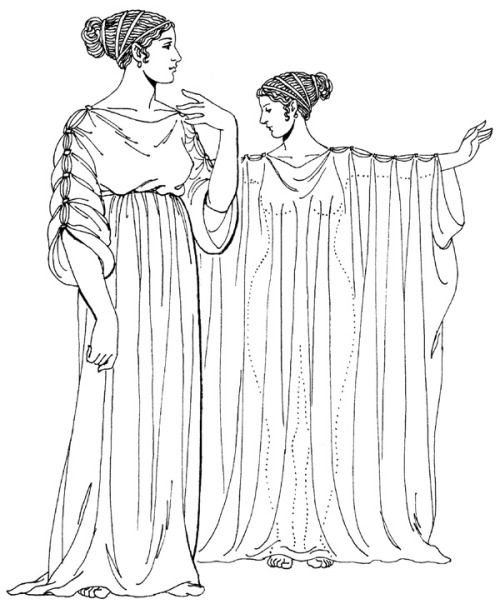
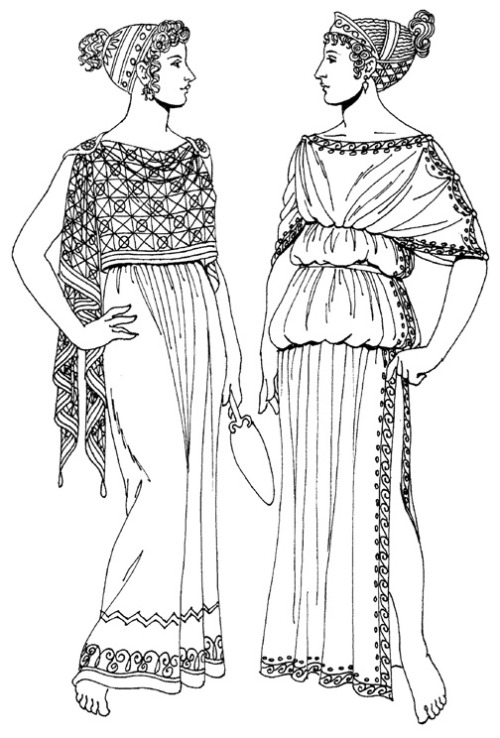
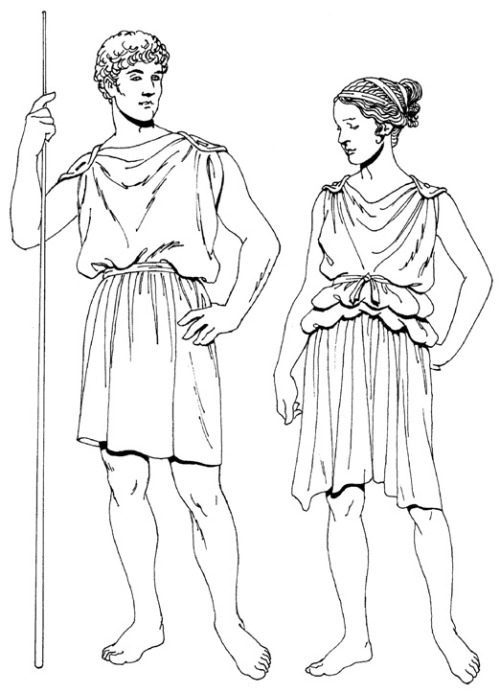

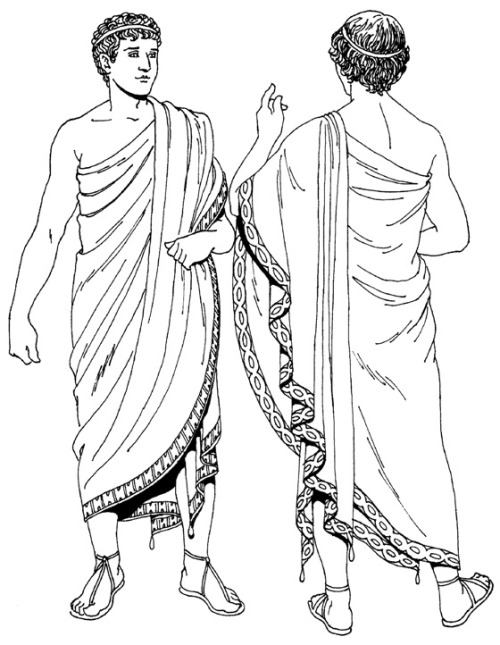
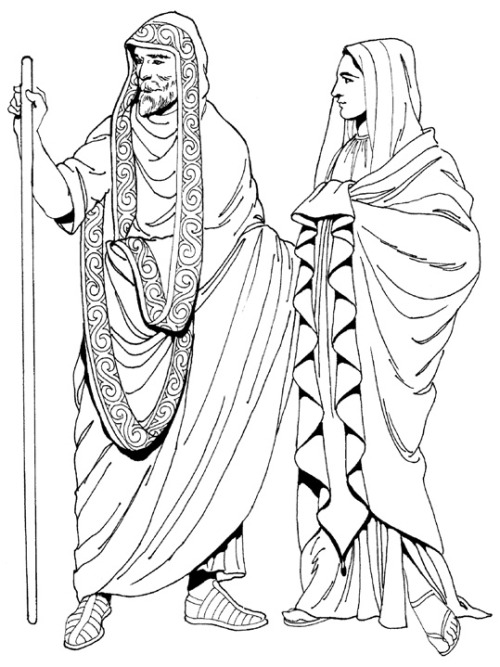

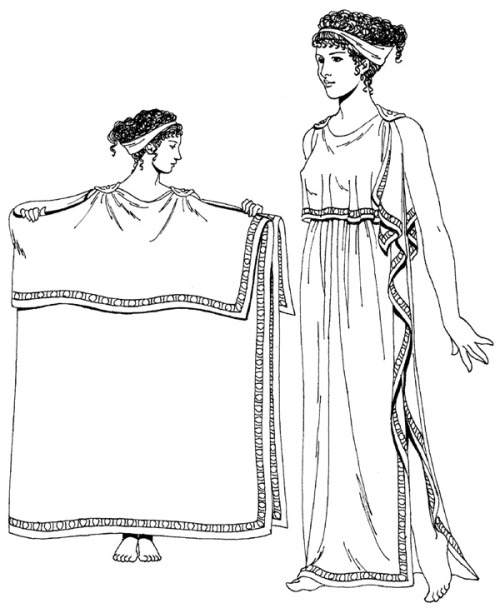


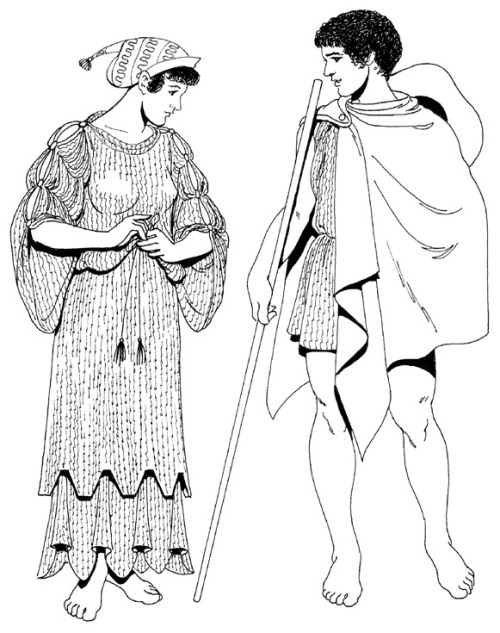
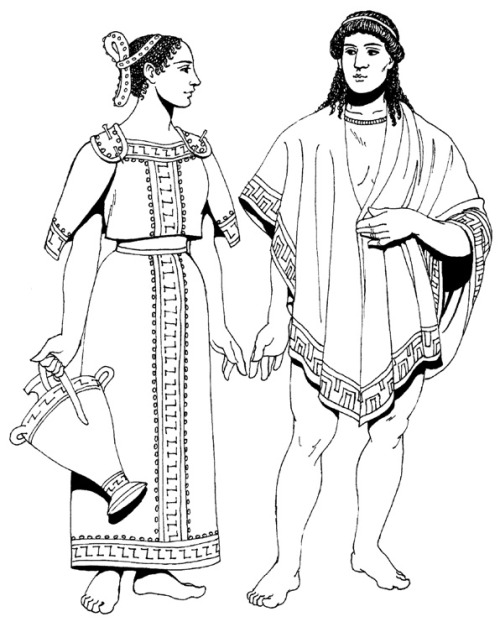
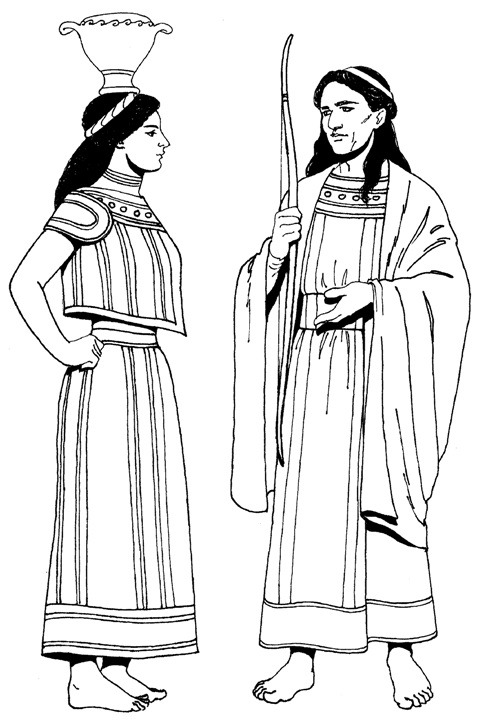
Ancient Greek fashions
1-3. chiton 4. feast guest and dancer 5-6. himatius 7. mantle 8. peplos 9. warriors 11. woman in Phrygian cap, traveler
Sources about the origin of Aphrodite
I will keep adding to this post (by re-blogging) each time I have something new.
I thank @junkblog101 for giving the following sources:
1) Aphrodite’s Origins: http://www.getty.edu/art/exhibitions/aphrodite/origins.html
2) Book “Transformation of a goddess : Ishtar, Astarte, Aphrodite”: https://searchworks.stanford.edu/view/10648962
3) Short description of Aphrodite/Venus figurines by the Museum of Art and Archeology: https://maa.missouri.edu/media-gallery/detail/71/322
4) A small pdf, part of a book, “The Olympian goddesses”: http://people.uncw.edu/deagona/MYTH/OlympianGodesses.pdf
My thoughts:
From those sources I have understood that there are some common elements between Aphrodite and eastern goddesses of love, but Aphrodite’s origin is still obscure.
I quote from the first: ”These divinities were associated with power, fertility, and war, and were characterized by fierce jealousy and aggressive sexuality” (For the Aphrodite figurine) “The nudity and breast-holding gesture are typical of much earlier Near Eastern figures, and make clear the importance that was ascribed to fertility and sexuality.” Also, “[Goddess Hathor’s] presence on this head (of an Aphrodite sculpture) again testifies to the Near Eastern elements that contributed to Aphrodite’s identity at Cyprus.” The last one puzzles me a little. I haven’t read it was common for gods to have other gods in their crowns. Maybe it wasn’t the goddess Hathor but Eastern people who dressed in a similar manner as this goddess?
So, their common elements were: sexuality, power, fertility, war (not so much for Aphrodite, though), nudity and breast-holding gesture. Well, those are similarities, but at the same time they don’t say much. While they clearly show some influence (nothing existed in a vacuum), they are not much, or enough to suggest the one came from the other. Influenced, would be a better word. Also, Ishtar/Astarte and Aphrodite have different “dynamics” as goddesses and different stories. I am not aware of any common stories between them (inform me if you know any, please!).
I can’t comment for the book, since I haven’t read it yet.
I don’t think the third link gives information about Eastern influence. It just states it. And while I would love to take their word for that, I would love more to have them say why or how this connection exists between the goddesses.
For the last link (and pdf) the things that I found in relation to eastern goddesses are these: “As a divine being, Aphrodite had close links with the Semetic goddess of love, Ishtar/Astarte, who was worshiped in Mesopotamia and Phoenicia. Aphrodite often bore the title “Heavenly” (Urania), while Astarte was invoked as the Queen of Heaven; and both goddesses were honored with incense altars and sacrifices of doves. Sacred prostitution, one of the best publicized aspects of the cult of Ishtar/Astarte, was also to be found in some of the centers of Aphrodite’s worship”. (Historical example of an athlete who dedicated women as prostitutes to an Aphrodite’s temple follows).
Moreover: “The Herodotus’ statement that the oldest cults of Aphrodite in Greece had been established in Phoenician settlers may contain a broader element of truth. The goddess had very strong associations with the island of Cyprus […]. And from the time of Homer onwards the epithet most commonly applied to her was ‘Cypris’, or ‘the Cyprian’. It is possible that she started life as a local Cyprian love goddess who took on some of Astarte’s characteristics when the island was colonized by the Phoenicians in the ninth century BC.[…] The reconstruction is speculative, however, for the picture of the goddess’s early development is still very unclear”.
Well, from what I gather from the last source, we know nothing for sure. If anything, the text actually suggests (with caution) that Aphrodite was a local Greek goddess and then she was influenced by cults of eastern love goddesses. And we are not sure of it either.
Why I am saying she was Greek when they say “local”? Greeks (Mycyneans) were already in Cyprus from 14th CBC*. (We are talking about Pre-historic Greeks and they lived in one of the periods of the Greek culture. Greek doesn’t necessarily mean classical Athens). As trade was happening, there were cultural exchanges between the East and the island. So again, because she was made in Greece (according to the last source), we shouldn’t say that there wasn’t any influence. There probably was. Also, people existed in the island before the Greeks came, so perhaps it was they who made the early form of the goddess. But in the Geometric era (see the Homeric epics and hymn) the goddess had already a Greek name and came from Greek gods. So, if she came from residents of the island at all, she probably came from the Greeks.
*-Thomas, Carol G. and Conant, Craig: The Trojan War, pages 121–122. Greenwood Publishing Group, 2005. - A.D. Lacy. Greek Pottery in the Bronze Age
About Aphrodite’s identity as a Greek goddess:
Now if we accept she was indeed taken (for the argument’s sake) she is still distinctly Greek. She was already part of the pantheon in the Geometric era, when the Homeric epics and hymns were written, because she is in them. Her transition period could have been in 9th-8th centuries BC and maybe a little later. Until 381AC, when Greek polytheists started getting prosecuted, the Greeks had more than a millennia to make her a Greek goddess and give her her unique attributes and stories. For more than a thousand years Aphrodite has been into Greek/Hellenic households.
I am not saying the case of Aphrodite is closed because four sources are on the table. And I still haven’t read the book (2nd link)! I am sure there will be more good info there. So the picture is not completed.
Anyone who has found additional sources, pm me or tag me! And if you have something to say about the post, feel free to reblog and add stuff! Perhaps correct me even.
Random Fact #915
According to Ancient Greek myth, the first spider was a woman named Arachne who bragged she could spin better than the goddesses themselves (which, if you’re not familiar with Ancient Greek culture, is a big no-no). As punishment, she was transformed into the first spider.
Spiders’ class name in taxonomy, Arachnid, is a reference to Arachne.

Artistic conception of the auroras os Saturn and Earth (jupiter’s image is real - ultraviolet) Instagram: wonders_of_the_cosmos
Sometimes we look at bizarre catwalk fashions like…

“What was that designer ON?? Nobody would ever wear that!!!”
…But sometimes I stop and think about what fashion designers have to work with.
I mean, as animals, we did not develop a very design-able shape.

(^THIS is a designable shape.)
We developed these weird, organic shapes and then decided we wanted to put things ON our shape. And that was hard.

(^This is NOT a designable shape, especially since the arms don’t just stay up like that and the whole thing’s always moving…)
I mean, think how hard it was to come up a way to put on clothing that would stay on your body while you’re hunting and gathering and keep you warm, made mostly out of the skins of OTHER animals, which ALSO do not grow in nice, flat, straight-edged pieces:

(^Working out THIS would have been very difficult. We’ve got ideas now to work with, stuff like “neck hole” and “arm holes” and “sleeves” and “loincloth”… but they had to figure that shit out from SCRATCH.)
And then different groups of people in different areas decided that certain things in clothing were “normal”. People in Polynesia were like, “Hey, clothing can be grass!”

And people in Europe were like, “Hey! Clothing can be pointy shoes!”

And people in east Africa were like, “Hey! Clothing can be big flat collars!”

And now people in western culture are like, “Hey! clothing can be double-breasted suit and tie!”
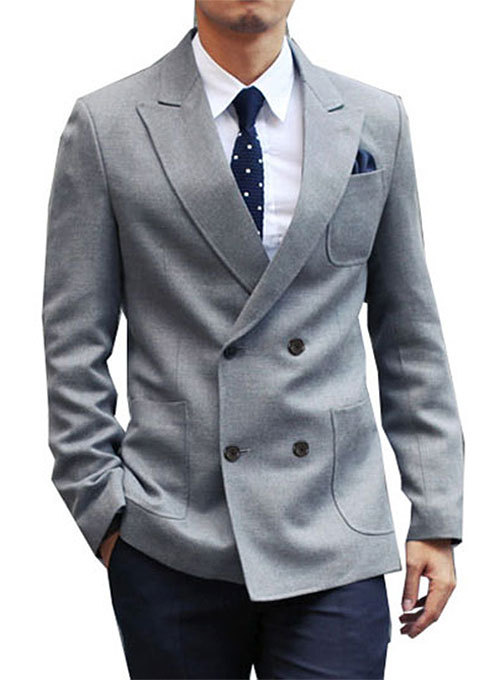
And avant-garde designer are like, “Hey! clothing can be… whatever the fuck this thing is!”

And honestly, when it comes down to it, that’s not any weirder than the stereotyped shape of the double-breasted suit and tie, or the pointy shoes you trip over, or the skirt made of grass. Human bodies are weird, and the things we wear on our bodies are also weird. It all just comes down to what you’re used to seeing.
The Song of Achilles, Madeline Miller

Rating: No Good Genre: Fantasy Representation: Gay men, Greek/Mediterranean cast Trigger Warnings: rape, rape culture, explicit sex scenes, child sexualization, exotified ethnicity, character death
I stopped reading The Song of Achilles a third of the way through. I started the novel with high hopes, as The Song of Achilles promised to be an exploration of the romantic relationship between Achilles and Patroclus—taking what The Iliad only implied and putting it to paper.
Here’s what I was hoping for: an honest exploration of the ancient Greek conception of sexuality, taking into account that homoeroticism that we today would call “homosexual” was not considered part of one’s sexual identity, simply what one did (in addition to taking a wife, of course). What would a boy growing up in (mythical) ancient Greece, a land where even Zeus took male lovers, think about his own romantic and sexual desires? Does he desire only men (in The Song of Achilles this is true of both Achilles and Patroclus), and what does that mean for him personally, as compared to what it would mean for us today?
Here’s what I got: The Song of Achilles reads very much like the erotic fantasy of a straight woman about gay men. I was made personally uncomfortable, especially considering how young the characters are in the first 3rd of the book (9-16). The Song of Achilles revisits tired tropes that seem very out of place in the ancient Greek setting–a culture notorious for its fluid sexuality. Thetis (Achilles’ mother) behaves more like a small town republican than a goddess. She’s upset that Achilles and Patroclus kiss and makes it her mission to separate them. This makes absolutely no sense considering that, as a goddess, she should be above the petty who’s-kissing-who of mortals, and makes even less sense when you consider that Zeus himself took male lovers. The bigotry is only included in the text because Miller has no idea how to deal with queer characters outside of the angst of the present day. I was expecting this story to at least acknowledge that ancient Greece is not the same as Victorian England just because both periods happened out of living memory.
Neither Achilles nor Patroclus consider themselves as part of a greater social context. If Patroclus really had exclusive feelings towards men, there would be some internal narrative exploring how he feels about his feelings–how does he see himself fitting into his culture? Instead, the entire narrative focuses on the external–how attractive Achilles is, and the external consequences for their relationship (such as the disapproval of Achilles’ mother). This is what really convinced me that this book was written for straight readers. A coming of age story about queer children, yet they spare no thought for their own identities? No thoughts of the future, or considerations of whether there are others like them? I would have been incredibly interested in a well-researched novel which explores the unique challenges (and enjoyment!) of queerness in an ancient context. That would have been a truly unique novel. The Song of Achilles, however, reads like Miller read one Alex Sanchez novel and thought she was somehow qualified to write this book.
Further, Miller struggles with separating her own voice from the voice of her first person narrator, which makes for some very uncomfortable narration surrounding the bodies of 9-13 year old children. Patroclus, 9 at the time, describes Achilles as “still plump with childhood” and with “hair lit like honey in the sun.” Later, at 13, Achilles is “supple.” This is the language not of a child, but of an adult observing childhood. A child would never say another child their age was “still plump with childhood.” Patroclus’ voice gets lost in Miller’s desire to write in a sophisticated style, which has the horrible repercussion of making her novel voyeuristic.
Related to this is the fact that Miller exotifies the nationalities of her characters. Everyone has “skin the color of freshly pressed olive oil” which is so silly coming from the point of view of Patroclus, who has grown up seeing Mediterranean people all his life–and looking just like them. Frankly, it’s racist. It’s a white woman looking in and impressing her own observations, not the observations of a young Greek boy, on the narrative. Some further racism: Achilles, hyperattractive demi-god that he is, is portrayed as “whiter” than everyone else–and his beauty is almost always described by the color of his “golden” skin. His hair is honey and his eyes are green, in contrast to the dark eyes and the “nut-brown” bodies of the rest of the Greeks.
So, not only is The Song of Achilles a disappointment for queer readers looking for good representation, it’s not that well written, constantly breaking point of view to give us an uncomfortable dose of child sexualization and racism. The premise of this novel had a lot of potential, but Miller couldn’t follow through with an inoffensive execution.
For more info on Madeline Miller, here’s her website
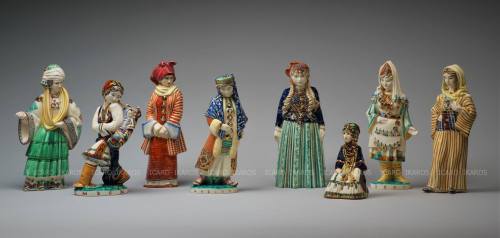



A floating market is a market where goods are sold from boats. Originating in times and places where water transport played an important role in daily life, most floating markets operating today mainly serve as tourist attractions, and are chiefly found in Thailand,Indonesia and Vietnam. (Source)





Maybe check out my other posts too!
30-day Journal Prompt
Tips for Remote Learning from Home
Mini guide to Dalgona Coffee
Stress Detox for Online Learning
Women Self Defense in 1947
Yep, that's definitely a rock.
Okay, I’ve seriously been slacking. Time to write a week’s worth of updates!
June 11th
Back to the museum! On Monday, we were given topics to write about that related to ancient Cyprus. The museum is looking to add this info to their website within the next year, and they’re even thinking about putting together a written publication. This means that my little blurbs about Cyprus could end up in an actual museum publication! Holy crap!
I chose to write about “Trade and Contacts with East and West in the Prehistoric Period.” Let me tell you, those Cypriots sure had an extensive maritime trade network. There was a lot of information that I had to condense and write summaries of. Doing that pretty much took up my whole day.
June 12th
Tuesday was absolutely amazing. Mimika had arranged for Dakota, Haley (the other intern), and me to meet the curator of the Antikythera Shipwreck exhibit at the National Museum, where she’d give us a personal tour! Dakota and I met Haley at the Cycladic Museum, and then we trekked to the National Museum from there, which was about a thirty minute walk. We ventured through Omonia, which is the sketchiest district in central Athens, apparently. But, it was broad daylight, and there were three of us, so we were okay. I actually kind of liked Omonia and would love to go back and take good photos there. But there are anarchists there…supposedly. Everyone keeps warning us about them.
The National Museum is absolutely GIGANTIC! It was a bit daunting, actually. We were told to go around the side to the office entrance, where we would meet the curator, Christina Avronidaki. However, we couldn't find said entrance, so we walked through the front. We told them we were to meet with Dr. Avronidaki, but they had no idea what we were going on about. So…we had to go back around and locate the office, which we finally did.
We were introduced to Christina, who’s a very nice woman. She gave us special passes that gave us free reign of the museum. I mean, with our special passes from the Greek government, we’d be able to get in for free anyway, but I digress…
I almost cried during the tour of the Antikythera exhibition. It was just so amazing; I’ve been reading about the wreck (and the Mechanism, of course!) for YEARS, and to finally see it was one of the best experiences I’ve had to this day. The so-called Antikythera Mechanism was way smaller than I thought it’d be! It was smaller than my head (and I have a pretty small head). I always had it in my mind that it would be some huge device, but it wasn’t at all! I felt almost as cheated as I felt when I saw how small the Kritios Boy is…my other favourite part of the exhibit was the marble sculptures. They are definitely a sight to be seen. Where they were buried in sediment on the sea floor, they were pristine. However, where they were exposed, they looked all “corroded.” It was extremely eerie, but also SO COOL. I’ll upload some pictures later.
After we said goodbye to Christina, we wandered around the museum for another hour and a half. Just like at the Acropolis Museum, I saw so many pieces that I’d already seen in textbooks. Seeing them up close and personal, though, was something else. I managed to humiliate myself, however. I wanted to pose with one of my favourite pieces of sculpture, the Artemision Zeus/Poseidon. As soon as I tried that, a guy from the museum started flipping a shit and causing a scene. Awkward…you see, in situations like this, I laugh when under pressure. That just made it worse. Needless to say, I left that room as soon as possible.
Other highlights included seeing the golden death mask of “Agamemnon” from Mycenae as well as the National Museum’s collection of Cycladic Art. We then went to turn in our badges, and we did so by sneaking through a gap in the back wall of the Antikythera exhibit. Like a boss.
After we left the museum, we stopped at a café in Omonia. It was really nice to unwind and get to know Haley a bit better. We had an interesting conversation about our interests in art, and Dakota and I talked about archaeology. Then, we parted ways since Haley had to go back to her apartment at 1:30. Dakota and I tried to find the Numismatic Museum and got pretty turned around. I wanted to give up since the bandaids I’d put on my toes kept falling off. Result: bleeding blisters on my pinky toes. Ouch. But, we eventually found it and toured the collection. The house was absolutely beautiful, except for one tiny little detail: swastikas. Everywhere. Swastikas on the floor mosaics…swastikas on the walls…oy vey. Later, we learned that the house belonged to Heinrich Schliemann for a time. That explains everything. If you know anything about classical archaeology, it’ll make sense to you, too. But the coin collection itself was quite impressive once you put the swastikas out of your mind. I do have to say that coins aren’t really my thing, though. I understand their importance to finding the chronology of a site, but studying them isn’t really something I’d want to do.
Dakota and I split up near the Cycladic Museum. She needed to send some postcards, and I wanted to head back to the BSA to disinfect my blisters. Fun. Right near the BSA, though, I walked past a dead kitten. That totally ruined my mood. :(
That night, Dakota went out with her friend from Bryn Mawr who happened to be in Athens for the week. I just hung out. It was a pretty long day, after all.
June 13th
Wednesday was our last day at the Cycladic Museum before heading to Patras for two weeks. At breakfast, we heard some pretty hilarious stories from Alice about the time she spent working at the Sherlock Holmes Museum in London. Apparently, the guy who played Watson got fired for being racist, tries to hide the fact that he’s from New Zealand, and took voice lessons to lose his Kiwi accent and sound British. He sounds like a winner. And then the guy who plays Sherlock won’t answer to anything but “Sherlock,” so his true identity is a mystery. Great stuff.
At the museum, we sent our summaries on our topics to Mimika as soon as we arrived. A short time later, she called us into her office and proceeded to tell us how absolutely astounded she was by how well we wrote! She couldn’t believe that we’d only been in college for two years and said that that post graduate Greek students could hardly write summaries that well. Thanks, Bryn Mawr Archaeology Department! I knew your extremely high standards were good for something! Basically, I felt happy for the rest of the day just knowing how highly she thought of us. I then moved onto a new topic to write about. This time, I chose the history of writing in ancient Cyprus. It was very interesting indeed!
We headed out to get lunch at 1. Both of us got tiropita and had our meals back at the office. It was pretty sweltering in there. Mimika then told us that another curator, Maria (who’d given us a tour of the museum’s Cycladic collection), was absolutely frantic and needed our help! Sasha and Dakota to the rescue! It turns out that she needed our help to write tweets for the museum’s Twitter. So, we spent the rest of the day coming up with the best tweets ever in Haley’s air-conditioned office. When they get posted eventually, EVERYONE will be flocking to the museum. There was one that I wanted to put in about Nero and the violin-shaped people figurines, but it was probably better that I didn’t…
That concluded our first leg of our internship. We said goodbye to Mimika and headed back to the BSA to pack (supposedly). We bought laundry detergent on the way because we planned to wash our clothes before leaving. That never happened, and we figured we’d just wash our clothes in the hotel bathtub in Patras. Euro 2012 was on…
June 14th
Off to Patras! Well, first I had to finish packing. It was a bit of a disaster. How the hell am I gonna manage next time? When everything was stuffed into my bags, we left the BSA and took a cab to the bus station. What a busy place! There, we called Konstantinos “Kostas” Paschalidis, who was going to be our guide/“boss” in Patras. He’s one of the guys in charge at the dig site and is a curator at the National Museum.
Our bus left at 12:30. I wanted to stay awake and look at all the scenery, but that just didn’t happen. I took a much-needed nap at around 1:00 and woke up around 1:45. Okay, so it wasn’t much of a nap. We pulled into Patras at 3:20, which was a bit later than we should have, but that was okay. We got there intact!
We met Kostas at the bus station. He’s a really cool dude. Hilarious, actually. He has a cute little hatchback from the 80s that just barely managed to fit our luggage. Score! We then arrived at the hotel. It’s so nice! Our room’s a bit small, but it’s really cool because it has the best wallpaper ever. Pictures will follow. And about the laundry situation…there’s no bathtub. Still have to figure out what to do about that. The sink’s a bit shallow…
At 8, we went to the lobby to meet Dr. Lena Papazoglou-Manioudaki. She’s the head curator of the Prehistoric Collection at the National Museum and has been working at the dig site since the excavation started in 2008. She introduced us to the two post-grad students we’d be working with, Katarina and Panagiotis. Kostas was a bit late, but then we headed out when he arrived. We went up to the square near the hotel and went to a cute little café. I ate so much (I’d only had a Luna Bar at the bus station) salad, and I even tried a spinach-type dish that I really enjoyed. I shared an eggplant with Dakota, and Lena shared her onion pie with us. I also ate a ton of olives, since those are really growing on me. Oh, and I had two glasses of white wine. That was fun.
The conversation was mostly in Greek, but occasionally Dakota and I were included. Kostas translated some stuff for us. I was very slightly buzzed at that point, so I didn’t really mind that we didn’t have to talk as much. Then came the dessert platter. Oh my god…heaven. We left at 10, at which point the cafe (and the streets) were absolutely bustling! Things really come alive in Europe after 8PM. But we were too tired to do anything else, so we went to sleep after we got to the hotel. We had to be up at 7 to go to the dig!
June 15th
Happy birthday to my husband, Tim Lincecum!
Ahem. Anyway. We woke up at 7, which was kind of difficult. I took a lightning-fast shower, which helped wake me up a bit. Then I slathered myself in sunblock/bug spray. Breakfast started at 7:30. Dakota and I met Kostas, ate, and left the hotel at 7:50. Then, we headed to the dig site. It’s about five kilometres from our hotel and up a lot of winding roads. At one point, it becomes all dirt and gravel, and it gets really bumpy. I’ve never been on a road where only inches separated you from safety and certain death by falling off a mountainside. It was crazy. But Kostas playing Greek music from the 60s-80s was a fun perk. He made a habit of telling us when certain songs were from. “Yes, this is early 80s."
We got to the end of the road, where we met Katarina and Panagiotis. We then had to hike a few hundred metres to the site itself. I immediately managed to tumble down a steep slope. I scratched my leg up pretty well, but I felt awesome. First battle wound! I later figured out my contacts were behind every little stumble I had. My left one was bothering me, so it screwed with my depth perception. Also, I have pretty flimsy ankles.
Kostas gave us a tour of the site when we arrived. He introduced us to the workmen, but none of them speak English. I was immediately blown away by the view. From the hill (which is more like a really small mountain), you can see the whole city of Patras, as well as the Ionian Sea! I can only imagine how beautiful the sunset would be from up there. The background noise was a lot of cowbells ringing and roosters crowing. On an opposite hill, there’s a weird family who gets all defensive if you try to go near them. Turns out the National Archaeological Service is renting the hill we’re working on from them, but they don’t like it. The cowbells grew closer, and it turns out that they belonged to goats. Kostas doesn’t like the goats because they go to the bathroom on the site.
The settlement is from the Mycenaean civilisation and probably dates to around 1500 BCE. It was incredible standing on floors so old. The upper part of the site has the remnants of what could’ve been an Archaic Temple (so, maybe 6th-5th centuries BCE). Lena told us that it may just be one of the oldest Greek temples EVER. And I got to stand on its column bases! It also has an apsidal structure and what appears to be a destruction deposit. Kostas was working more in the lower level, however. That’s where a bunch of walls have been found. I got to stand in actual Mycenaean ROOMS. It was so amazing to be surrounded by so much history (or prehistory, if you’d prefer). We didn’t do much after the tour, but Katarina taught us how to distinguish pot sherds from rocks. As the workers were shovelling dirt into a wheelbarrow, we went through the dirt looking for sherds. More often than not, we heard Katarina say, "that’s a rock.” “Yep, that’s a rock.” “Rock.” “Petra.” We did find some sherds, however, so it wasn’t a total failure. Then, we watched the workers uncover more of the wall in square Θ17 (we learned about all the site divisions and how to classify objects).
At 11:30, we had lunch in the “air conditioned” place, as Kostas calls it. It’s a small grove of trees that provides shade and a nice breeze. I only had a granola bar, but I shared it with Dakota. Panagiotis had a few breadsticks that he shared with us. We’d definitely have to buy our own food.
The day continued much like that. When I was on the upper part of the site with Dakota, Kostas came up and said, “Sasha, I think I found something of yours!” It turns out he had my left contact lens. No wonder I’d stopped rubbing my left eye! They found it on Wall 2. Who knew that the Mycenaeans had advanced contact lens technology? Basically, we had to put it in a baggy with water, like a goldfish, if we wanted to save it. Its shape was a bit wonky, but it looked normal after it got hydrated. So, that was fun.
Among the day’s finds were a very tiny bronze ring found in the upper part and then some later, Archaic pot sherds on the lower part. You could tell because of the glossy black glaze. Kostas got so annoyed and was like, “GET OUT OF MY SITE!” It was pretty hilarious. Oh, Archaic pottery…why you in a Mycenaean layer?
We left at 2:15, and I managed not to trip on anything else on the way back to the car. Score! Once back in the hotel, we showered. Oh, that was much needed. Then, Dakota and I took a nap until about 8, when we headed down to the city’s wharf. Patras is a really nice city. It’s much smaller than Athens, but it is still pretty lively. The docks were full of people as the sun began to set. I’d laid eyes on one of the most beautiful sunsets I’ve ever seen. Pictures to come. We then headed to a market to buy lunch food for the next two weeks. Peanut butter jelly time!!! After dropping our food at the hotel, we went out to eat back down by the sea. We found a place where I had a salad and a veggie burger. Let me tell you, that was one of the best veggie burgers I’d ever had. Omnomnomnom.
Afterwards, we went back to the hotel, watched Euro 2012, and slept.
June 16th
Had to wake up again at 7. We ate breakfast with Kostas and then went back to the dig. Working on a Saturday, hellz yeah!
This time, I didn’t fall on the way to the site. I think it’s because I was actually wearing glasses. Either that, or I was just extremely excited because we were gonna excavate a pot of our very own! We’d be real archaeologists!
When we got to the site, Kostas gave us a bunch of tools and brought us to the room where the pot was. Katarina told us how to work around the pot so we wouldn’t break it, and we started to excavate. We were so excited. I may have been singing the theme song from the movie “Holes,” but it was totally necessary. YOU GOT TO DIG THEM HOLES.
About a half hour in, we’d already exposed a lot of the pot. We were talking about how it should go into a museum and how our names would be attached to it. So exciting. But then, Kostas had to come and burst our bubble…
The pot was a lie.
Well, it really was an ancient Mycenaean pot, but it’s one they rebury every year for the next season’s Bryn Mawr students. Bummer! Kostas called it “Persephone,” because it goes to ground for about six months every year.
For the rest of the day, we watched the workers uncover more of a wall. We did help Panagiotis, though. He showed us how to find walls and use a brush to expose stones. He then had the idea after lunch for us to do a little bit of surveying. Of course, that wasn’t necessarily allowed, but whatever. After lunch, we went down a really steep slope that had a goat path. We’re not goats, though, so it was a bit of a tricky descent. We ended up in a rocky field full of a plant known as “donkey thorns.” They’re a really interesting looking flower, kind of alien-like. Basically, we found a bunch of sherds. We didn’t take that many back up, but Kostas found some Corinthian-style roof tiles! Those are from the 5th century BCE, so they’re way post-Mycenaean. The climb back up was a bit more difficult because it was so steep. A plant stabbed my leg, which I didn’t appreciate. It was also 104º F, but what can ya do?
Then, we classified some more pot sherds with Katarina and wandered between the two levels of the site. We left at 2 because Kostas and Lena had to drive back to Athens to vote. That’s kind of annoying that they had to drive three hours, but this is an extremely important election.
That night, Dakota and I went back down to the wharf and watched the sunset. Then, we went to dinner at the same place we went to the previous night. Mmm, veggie burger. We watched the Euro 2012 game because it was Greece vs. Russia. It was a really intense game, but we left just before halftime to get froyo.
On our walk back to the hotel, we heard a shit ton of screaming. It seemed as though there were a riot starting! But, it just turns out that Greece had scored a goal. Crazy, man. We got a bit lost on the way back, but we managed. I turned the TV on when we got to the room and watched the rest of the game while Dakota skyped her friends.
GREECE WON.
And then the honking and shouting didn’t stop until 2 AM. Greece, you DRUNK. It’s just the quarterfinals. But they weren’t expecting to beat Russia, so…I guess that’s okay. I wonder how it’s gonna be for the elections today.
June 17th
Woke up at 5 AM to watch the Giants game. I hoped Timmy would turn it around in Seattle. After giving up two homers in the first, he settled down. And then we came back and scored 4 runs for him. But then I fell asleep, and when I woke up, the game was tied in the 6th inning (or maybe the 5th). A relief pitcher was in, so I was confused. But I was too tired, and I fell back asleep.
Woke up for real at 12:30. My leg was really hurting from pulling a muscle when I fell a few days ago. My calf is just really tight. Anyway, we walked up the hill to see the Byzantine fortress, but it was closed. Boooooo.
Dakota and I split up, and I got lunch at the café we went to a few nights ago. I had a huge salad and fourteen olives. I’m an olive fiend.
After lunch, I took a photo walk. I think I got some good pictures.
Then I got back to the hotel. And now here I am, trying to write blog entries.
Remind me not to slack for this long ever again lol.
THE END (for now)





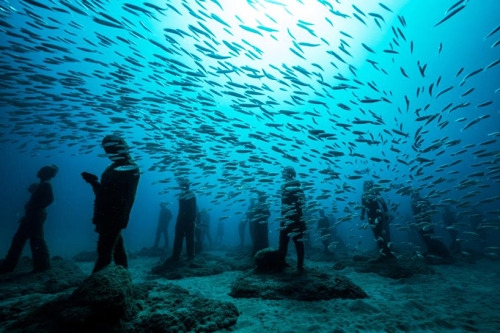



Lanzarote, Spain: british artist Jason Decaires Taylor has finally completed his monumental underwater project Museo Atlantico.





If you feel like you’ve seen this alread, that’s normal. This list of recommendation has been previously posted on my first account @praestantias which has been deleted for some reasons. So here I am, reposting it.
Hating how elitist and eurocentric the dark academia community became, I would truly appreciate that you leave some recommendation of book written by people of color, for I noticed that I am guilty of the eurocentric part, but I am really want to educate myself and read more non-white books.
Thank you for your suggestions!
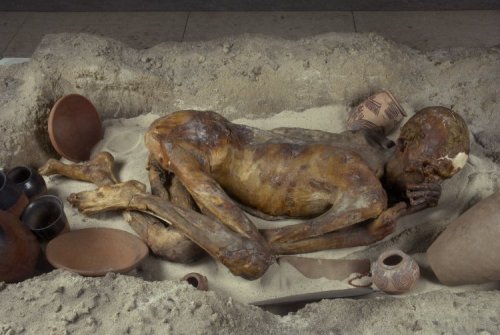
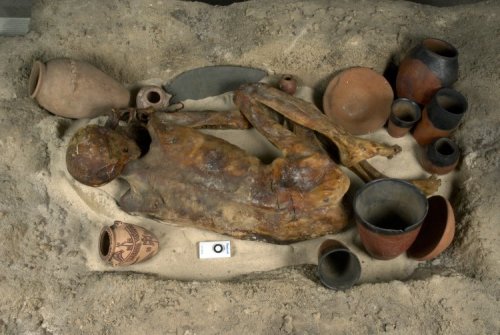
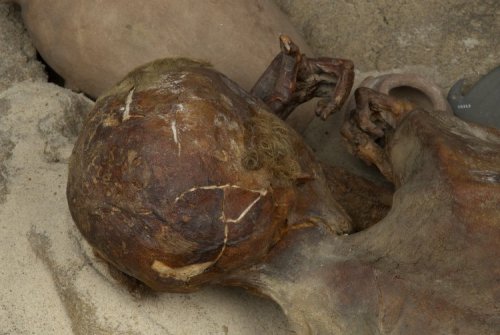
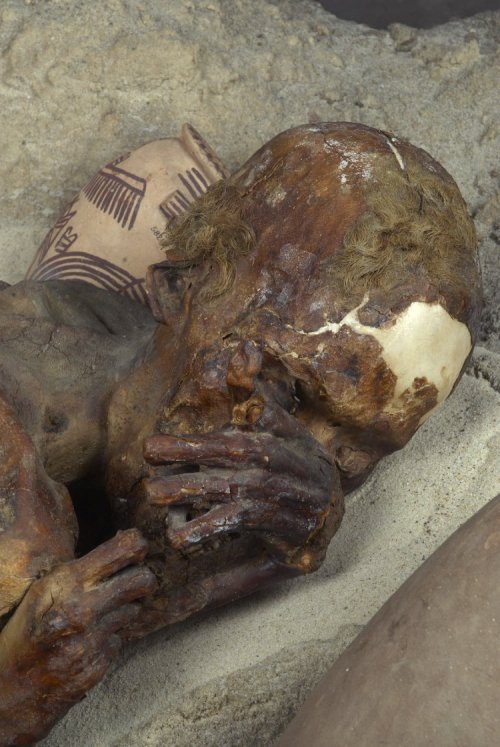
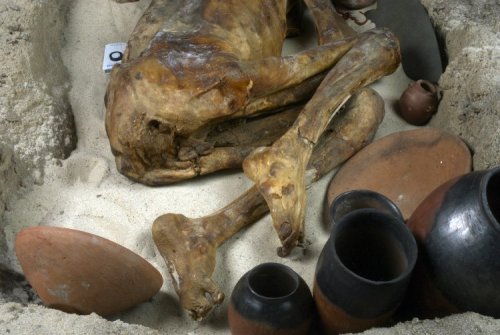
~ Predynastic Egyptian man.
Date: ca. 3500 B.C.
Place of origin: Gebelein
Period/culture: Late Predynastic; Naqada II
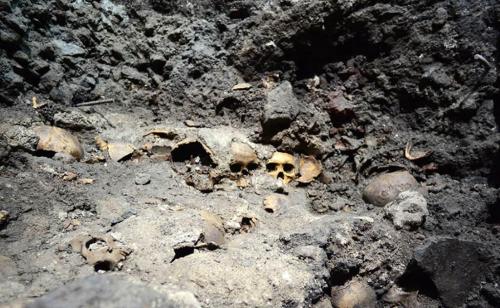
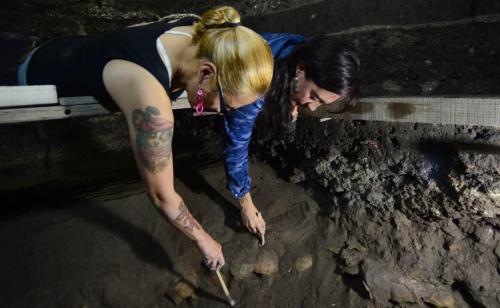
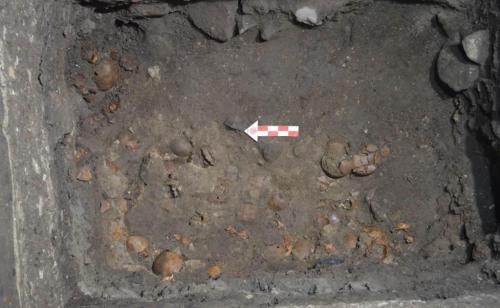
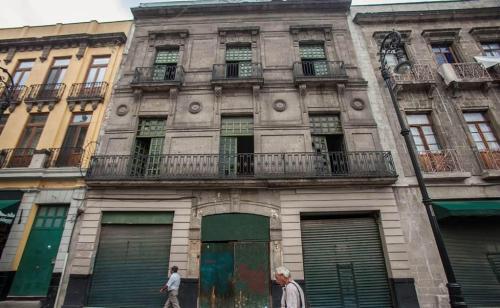
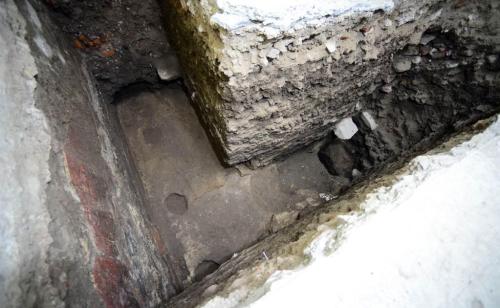

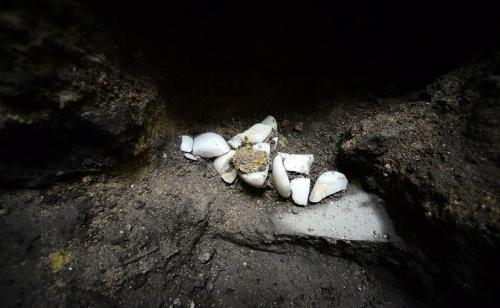
Hallan el Tzompantli más importante de Tenochtitlán. Es una estructura de tezontle y estuco de aproximadamente 45 centímetros de alto, 11 a 12 metros de ancho y alrededor de 34 metros de largo.
De acuerdo con el fundador del proyecto de investigación Templo Mayor, Eduardo Matos Moctezuma, arqueólogos del INAH descubrieron a dos metros de profundidad de la calle Guatelama 24, en San José Ixhuatepec, Tlalnepantla de Baz, el Tzompantli más importante del Centro Ceremonial de Tenochtitlán.
Cabe destacar que Tzompantli es un altar que construían algunas culturas precolombinas del antiguo México, el cual se encontraba decorado con cráneos tallados en piedra y estacas en la zona superior para clavar la cabeza de los sacrificados.
Durante una rueda de prensa organizada por el INAH, el también arqueólogo detalló que “Por su ubicación, sí se trata del Huey Tzompantli, gran Tzompantli, el principal, queda pendiente la localización de los otros, pero éste posiblemente sí se trata del mayor Tzompantli de Tenochtitlán.
En el Museo Nacional de Antropología, Raúl Barrera, al frente del Programa de Arqueología Urbana, que supervisa este proyecto, indicó que tras la primera etapa de excavación en ese predio que concluyó en el mes de junio, encontraron este vestigio azteca que no excede de los 35 cráneos, y del cual calculan que tenga 34 metros de largo por 12 de ancho.
“Todavía no sabemos el número de cráneos que conforman a este Tzompantli, habrá que excavar más, lo importante aquí es lo que describen las fuentes. Andrés de Tapia que era un soldado que vino con Hernán Cortés nos dejó una descripción amplia del Tzompantli, lo que él vio, incluso menciona que había cráneos unidos con cal, y nosotros ahora los estamos viendo. No sabemos todavía la forma porque está bajo el nivel de piso, pero lo encontrado concuerda con lo que él decía, en el sentido que están unidos de cal” finalizó Barrera.
Revelaron que próximamente iniciará la segunda etapa de trabajos de excavación y que la intención es que este vestigio pueda ser exhibido a través de una ventana arqueológica.
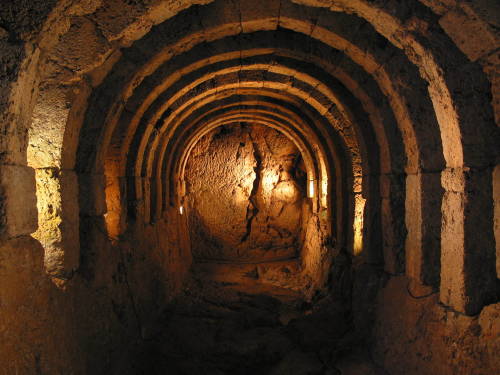
The Necromanteion or Nekromanteion was an ancient Greek temple of necromancy devoted to Hades and Persephone. According to tradition, it was located on the banks of the Acheron river in Epirus, near the ancient city of Ephyra.
The ancient Greeks believed that the souls of the dead entered the underworld though subterranean fissures, and that in special cases like this, arrangements could be made to communicate with the dead. This was used as an opportunity to commune with lost loved ones, and also to seek out the future telling skills of the dead.
Visitors wishing to communicate with the dead would have entered the dark chamber and followed specific rituals outlined for the protection from and communication with the dead which would have taken several days. When ready, a priest would usher them deeper inside for a ritual animal sacrifice, and through three gates symbolic of Hades.
Pilgrims expected to see the images of the dead as shadows against the flickering lantern light. These visions may have been enhanced by the special diet recommended in the days before entering the sanctuary, which some have described as including hallucinogens. Interestingly, inside the underground chambers, archaeologists have found mechanical contrivances which may have been used to enhance the appearance of animated dead. After a session with the dead, pilgrims were forbidden to talk about what they learned for fear of Hades claiming their own lives in exchange.
More recently a Greek-American study of towers in the area suggested that the ruins may have been the base of an agricultural tower, and the underground chambers storage areas for water or grain, rather than mystical communication with fortune-telling dead.
At least for now, the place remains officially identified as the Necromanteion, and has been preserved as such.
(Extra Source)
seems that Chrome has around 60-65% market share, so it’s not totally dominating the market yet but it’s worrying that we’re basically reliant on Apple and Microsoft to hold the line.
How to Study Like a Harvard Student
Taken from Sophia Chua-Rubenfeld, daughter of the Tiger Mother
Preliminary Steps 1. Choose classes that interest you. That way studying doesn’t feel like slave labor. If you don’t want to learn, then I can’t help you. 2. Make some friends. See steps 12, 13, 23, 24. General Principles 3. Study less, but study better. 4. Avoid Autopilot Brain at all costs. 5. Vague is bad. Vague is a waste of your time. 6. Write it down. 7. Suck it up, buckle down, get it done. Plan of Attack Phase I: Class 8. Show up. Everything will make a lot more sense that way, and you will save yourself a lot of time in the long run. 9. Take notes by hand. I don’t know the science behind it, but doing anything by hand is a way of carving it into your memory. Also, if you get bored you will doodle, which is still a thousand times better than ending up on stumbleupon or something. Phase II: Study Time 10. Get out of the library. The sheer fact of being in a library doesn’t fill you with knowledge. Eight hours of Facebooking in the library is still eight hours of Facebooking. Also, people who bring food and blankets to the library and just stay there during finals week start to smell weird. Go home and bathe. You can quiz yourself while you wash your hair. 11. Do a little every day, but don’t let it be your whole day. “This afternoon, I will read a chapter of something and do half a problem set. Then, I will watch an episode of South Park and go to the gym” ALWAYS BEATS “Starting right now, I am going to read as much as I possibly can…oh wow, now it’s midnight, I’m on page five, and my room reeks of ramen and dysfunction.” 12. Give yourself incentive. There’s nothing worse than a gaping abyss of study time. If you know you’re going out in six hours, you’re more likely to get something done. 13. Allow friends to confiscate your phone when they catch you playing Angry Birds. Oh and if you think you need a break, you probably don’t. Phase III: Assignments 14. Stop highlighting. Underlining is supposed to keep you focused, but it’s actually a one-way ticket to Autopilot Brain. You zone out, look down, and suddenly you have five pages of neon green that you don’t remember reading. Write notes in the margins instead. 15. Do all your own work. You get nothing out of copying a problem set. It’s also shady. 16. Read as much as you can. No way around it. Stop trying to cheat with Sparknotes. 17. Be a smart reader, not a robot (lol). Ask yourself: What is the author trying to prove? What is the logical progression of the argument? You can usually answer these questions by reading the introduction and conclusion of every chapter. Then, pick any two examples/anecdotes and commit them to memory (write them down). They will help you reconstruct the author’s argument later on. 18. Don’t read everything, but understand everything that you read. Better to have a deep understanding of a limited amount of material, than to have a vague understanding of an entire course. Once again: Vague is bad. Vague is a waste of your time. 19. Bullet points. For essays, summarizing, everything. Phase IV: Reading Period (Review Week) 20. Once again: do not move into the library. Eat, sleep, and bathe. 21. If you don’t understand it, it will definitely be on the exam. Solution: textbooks; the internet. 22. Do all the practice problems. This one is totally tiger mom. 23. People are often contemptuous of rote learning. Newsflash: even at great intellectual bastions like Harvard, you will be required to memorize formulas, names and dates. To memorize effectively: stop reading your list over and over again. It doesn’t work. Say it out loud, write it down. Remember how you made friends? Have them quiz you, then return the favor. 24. Again with the friends: ask them to listen while you explain a difficult concept to them. This forces you to articulate your understanding. Remember, vague is bad. 25. Go for the big picture. Try to figure out where a specific concept fits into the course as a whole. This will help you tap into Big Themes – every class has Big Themes – which will streamline what you need to know. You can learn a million facts, but until you understand how they fit together, you’re missing the point. Phase V: Exam Day 26. Crush exam. Get A.
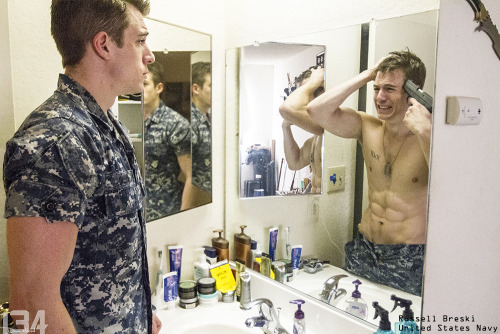
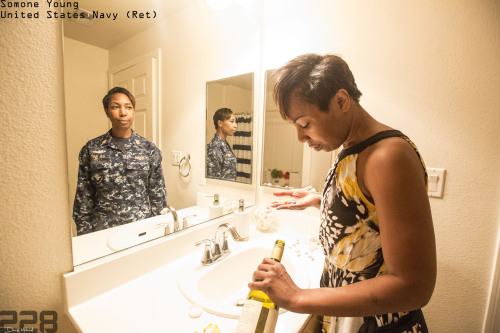
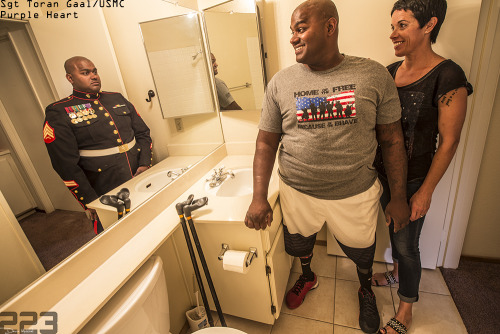
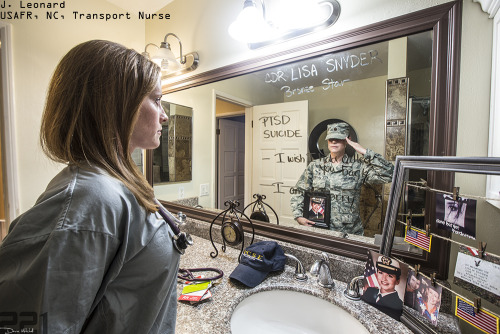
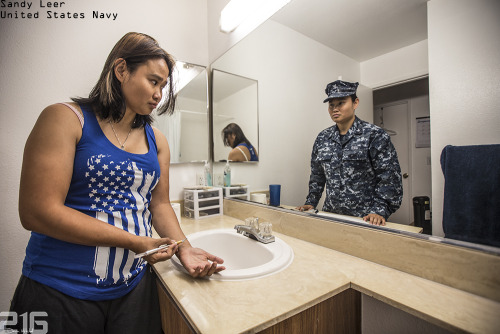
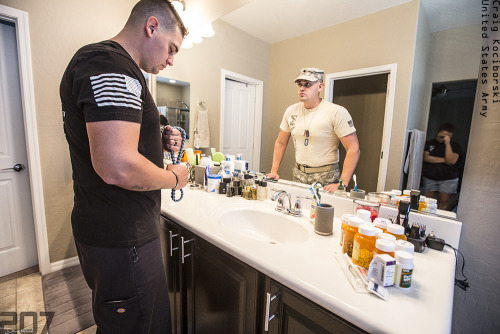
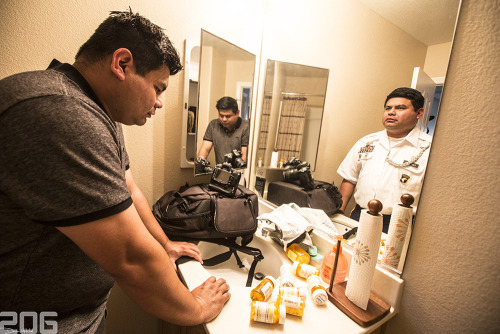
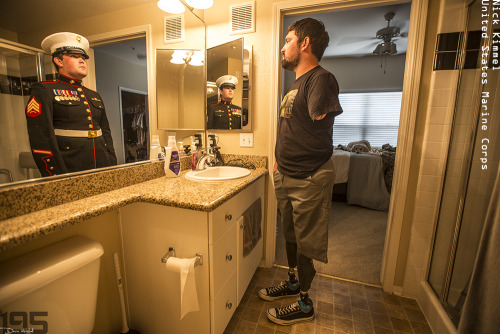

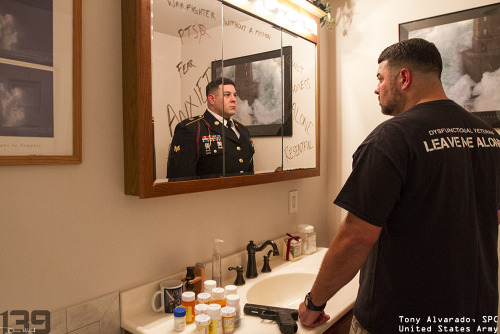






The fighting doesn’t just end after they come home.
Veteran Vision Project


Billie Lourd on how Grandma Debbie Reynolds wants people to identify her
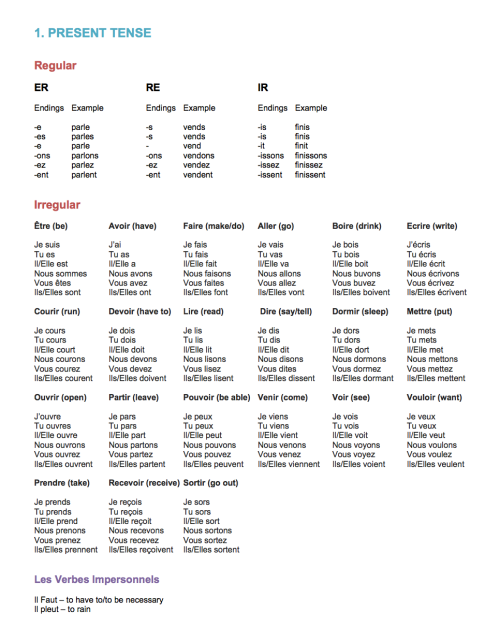
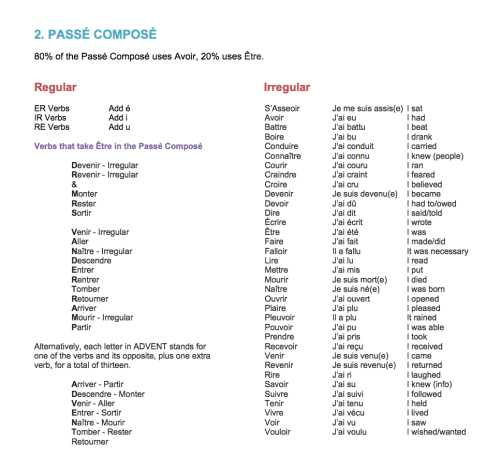
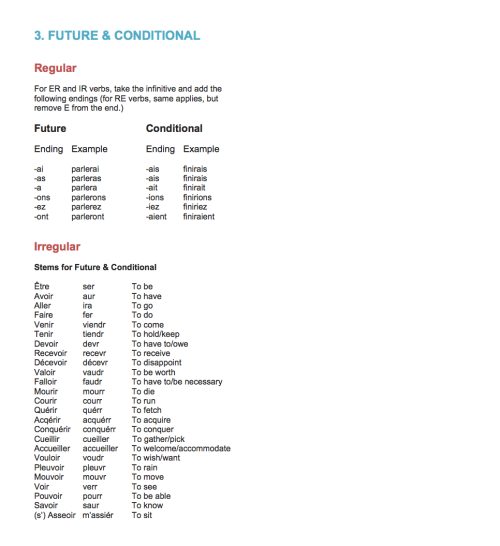
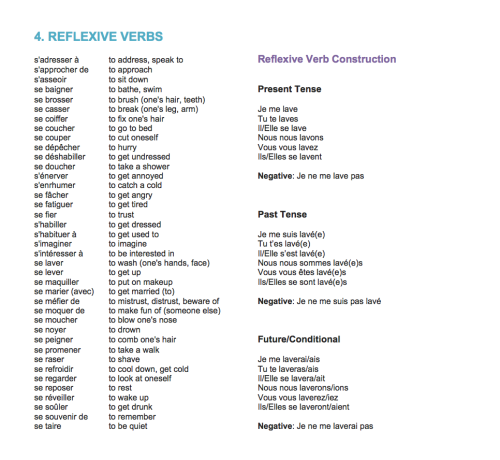
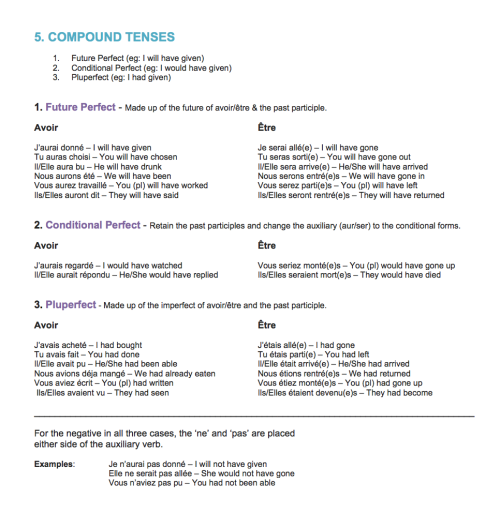
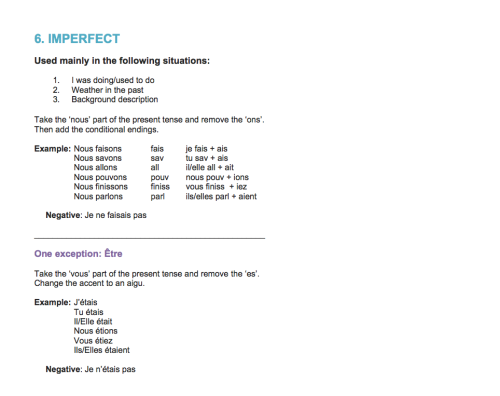
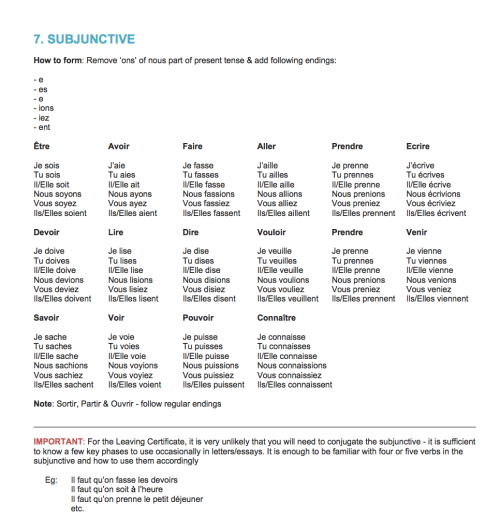
Susanna’s French Verb Masterpost!
Hello! I’ve been inundated recently with messages from lovely studyblrs asking me to post the verbs from my French verb wall - so voilá! I’m really sorry for the delay, I’ve been meaning to get around to it for ages, but what with oral exams, art projects, geography projects, graduation planning and general Head Girl stuff it’s been hectic.
I hope these help a few of you out, I know from experience how difficult it is to find a concise collection of all the French verbs (or certainly those necessary for the Leaving Cert/similar exams). I love having these stuck up on my wall beside my desk, they make French homework an absolute doddle. And by the way, my mum is a French teacher, so you can rest assured that this isn’t a load of ol’ inaccurate baloney!
Hope you all have a splendid day!

It is about to be the start of the next academic year so I decided to post this masterlist. Here are all of my original study posts so far and they are sorted by topics.
All of the information below can actually be found on this page (/mystudytips). It is constantly updated so if you want to look for my posts in an organised way you can always go there.
General
My Masterpost for Students
Start off your semester
10 days to prepare for next semester - #16
Motivation
Setting Goals - #1
Should I switch my studies? (answered)
How to deal with procrastination? (answered)
Study Skills
Study routine/steps
Marty Lobdell’s Lecture of Study Less Study Smart - #7
Focus/Concentration
Tools to help you stay focus - #12
Tips on staying focused - #14
How to shake off restlessness during study session (answered)
Study Management/Planning
General Tips - #2
How to make revision time table? (answered)
My Bullet Journal Set-up
Building study habits
Great study habits and developing them (answered)
Good study habits for high school students (answered)
What is HabitRPG? - #4
Lectures/Class
Why should we attend our classes?
Essay-writing
General steps on how to write an essay - #6
Reading
Masterpost on reading skills
How to go through your readings
Memory
How to memorise a page? How long does it take? (answered)
General Note-taking
A summary on how to take good lecture notes - #13
Type or write? (answered)
Type or write? updated + my approach (answered)
Is writing notes on iPad a good idea? (answered)
Should I take notes right now? (answered)
Consolidating lecture notes and textbook notes (answered)
How to get better handwriting? (answered)
Flashcards
Making flashcards for vocabularies (answered)
OneNote and other applications
How to take/organise notes? (feat. OneNote) (answered)
Updated and comprehensive post on how to take lecture notes on OneNote (answered)
How to use Cornell note-taking method on OneNote: Great for taking class notes! - #9
How do I use OneNote? (answered)
Introducing Notability
Exams and Tests
A Complete Exam Study Guide - #10
How to deal with anxiety before and during exams? (answered)
How to study for exams effectively? (answered)
Demotivated because of unsatisfactory grades? (answered)
Tips to prepare for take home exams
Printables
My printables
Summer planning printables (mine)
Semester planner printables (mine)
Note-taking printables (mine)
Organisation
My general study organisation system (answered)
My high school organisation system (answered)
My notebook organisation system in high school (answered)
Study space
My desk organisation - #18
Maintaining a clean desk (answered)
Stationery
Pen recommendations (answered)
The highlighters I use in bullet journal (answered)
My pens, pencils and notebooks (answered)
A comparison between Zebra Mildliners and Optex Care - whether they will smudge // with photo (answered)
Tech-stuff
What’s on my iPad mini? - #8
iPad Air or iPad mini for school? (answered)
Free apps/programs (that can substitute expensive ones) (answered)
Laptop recommendations for school (answered)
Which macbook pro should I get for college? (answered)
The app I use for writing and organising documents on iPad (answered)
The stylus I use for writing on iPad (answered)
A comparison of stylus (answered)
Amazing resources
Free online courses - #3
English Reading and Writing free online course
College Info Geek - more college tips, and free book
College and University
Things i wish i knew before college - #15
Tips on starting college (answered)
Personal records
Tips on writing a perfect résumé (answered)
Getting unsatisfactory grades?
Tips for students who may have unsatisfactory grades at the moment (answered)
Being called “you’re trying too hard”? (answered)
Anxiety and depression / Feeling unhappy?
Dealing with depression, stress and anxiety (answered)
Can’t study because of depression? (answered)
Will studyblr help with my anxiety and perfectionism? (answered)
Anxious about getting your results? (answered)
Sleep and Breaks
How to put sleeping schedule back on track for school? (answered)
Summer Posts
Summer opportunities - #5
Study during summer - prepare for the next semester - #11
How to make the most of summer (masterpost)
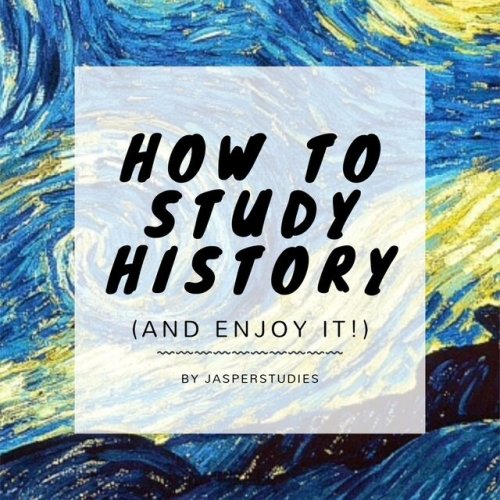
history is a subject i adore and over the years i’ve been studying it, i’ve picked up some great skills! here are my five top tips for aspiring historians out there, whether you know you’re one yet or not ;)
1. read!
no matter what you’re into, someone in history will be #relatable. want to study a gay king who kissed his gold-digging boyfriend in public? james i is right here! what about a prince who wore dresses to court? well, have you heard of philippe d'orléans? maybe you want to learn about the noblewoman who inspired dracula and bathed in the blood of local ladies! elizabeth báthory’s your girl. whatever you’re interested in, there’s someone out there who’s written about it - and learning about your course beyond the syllabus will improve your understanding as well as your writing skills! if you’re struggling to find a way to make a particular period interesting, just message a historian - i’m more of a social historian, but i’m always happy to talk about any aspect of history, and i’m sure others on tumblr feel the same!
check out:
academia.edu - papers about pretty much anything you could want to read, ranging from very accessible to heavy academic language
google books - a great starting point for literally anything, you can search “gay women 14th century” and you’ll find the historical lesbians you’ve always wanted
jstor - great for academic texts, but you can only read three per fortnight unless you sign up with a bunch of spam emails
2. take it outside the classroom!
history is all well and good in theory, but visiting historically significant locations can change your understanding completely. whether it’s a local graveyard to trace the stories of those before you or a medieval castle, visualising the lives of people you study makes the subject far more engaging (and easier to remember in the long run)!
check out:
travel journal masterpost by @stillstudies
historical days out for under £20
museums and galleries with free entry
3. make a timeline!
again, visualising history makes it so much easier to remember. whenever i start a new module of history, i make timelines by buying a huge roll of the cheapest wrapping paper i can find and taping it up onto my wall, patterned side down. i’ll make a really rough timeline of key events (e.g. my tudors timeline started with the accession of different monarchs, deaths of important people, where henry viii’s fancy led to) with big markers and then as we go through the course, i’ll add more detailed information in different colours! then, when i’m revising, i’ll tape another piece of wrapping paper over it and try and reconstruct it from memory. some people in my class use flashcards instead, with one for each year - do whatever works for you!
check out:
formatting and using flashcards by @illolita
flashcard tips by @tbhstudying
flip cards by @brokestudiesnrefs
4. make profiles of key figures!
when i was studying the american west, i found it really hard to keep track of all the generals because a) i’m about as far from a military historian as you can get and b) i hated them all. so to try and remember them, i made them into characters - some of them i doodled, some i made on the sims, some my history class acted out together. it’s a great way of forcing yourself to both research individual figures and remember little details about them - i’m a bit of a perfectionist, so looking up tiny facts about each rank to make The Perfect Sim really helped them stick in my head!
5. make your own history!
at the end of the day, it’s you that has to remember these facts for an exam. why not make a game out of it? reenact a key argument with a friend, read out preserved letters dramatically to yourself, watch historical dramas involving the figures you’re studying. if you can get yourself to remember things outside of a textbook, you’re halfway there!
check out:
studying history by @universtudy
writing history essays by @thehistorygrad
i hope you can find these useful! if you have any questions or just want to talk history, feel free to message me :)
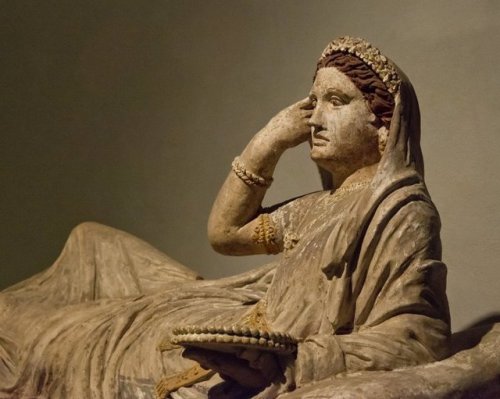
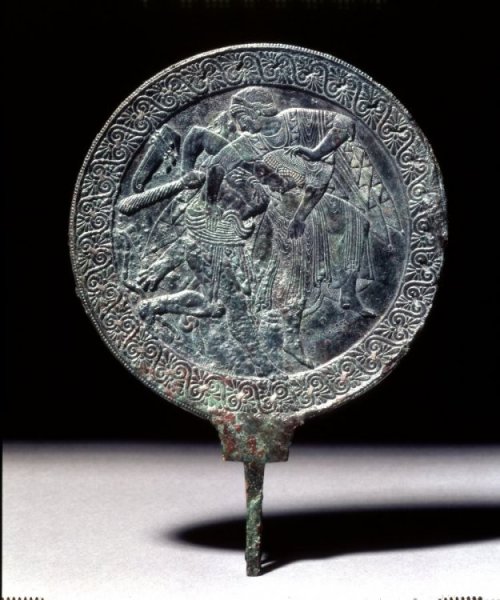
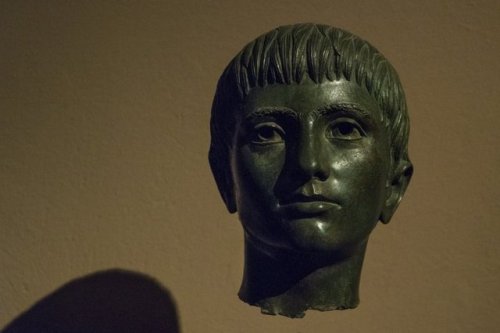
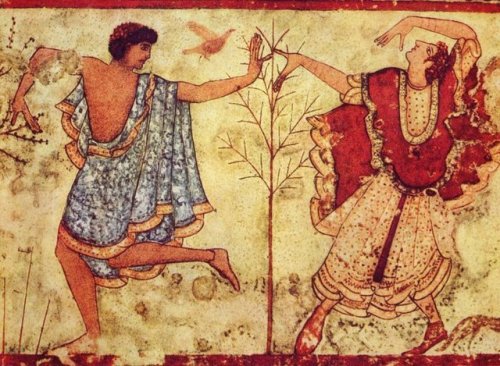
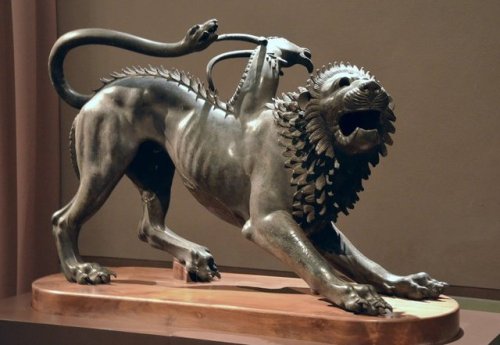
ETRUSCAN ART:
THE art of the Etruscans, who flourished in central Italy between the 8th and 3rd century BCE, is renowned for its vitality and often vivid colouring. Wall paintings were especially vibrant and frequently capture scenes of Etruscans enjoying themselves at parties and banquets. Terracotta additions to buildings were another Etruscanspeciality, as were carved bronze mirrors and fine figure sculpture in bronze and terracotta. Minor arts are perhaps best represented by intricate gold jewellery pieces and the distinctive black pottery known as bucchero whose shapes like the kantharos cup would inspire Greek potters.
The identification of what exactly is Etruscan art - a difficult enough question for any culture - is made more complicated by the fact that Etruria was never a single unified state but was, rather, a collection of independent city-states who formed both alliances and rivalries with each other over time. These cities, although culturally very similar, nevertheless produced artworks according to their own particular tastes and whims. Another difficulty is presented by the consequences of the Etruscans not living in isolation from other Mediterranean cultures. Ideas and art objects from Greece, Phoenicia, and the East reached Etruria via the long-established trade networks of the ancient Mediterranean.
Read More

My Application Proccess in Emirates – Assessment Day
So after you pass your Open Day, you get a call from EK Recruiter to come for the next day.
I got my call rather late around 4 pm and by that time I was losing hope… When my phone rang, I was shocked and I started jumping around :)
When I went again to hotel for the assessment day, I saw that only 32 people out of 200 made it into Assessment Day.
So Here is What Happens in Assessment Day
Part 1
They made 2 groups of 16 people. We were given each reference numbers (remember this number you will need on later stages)
With my group we all sat down in a circle. The recruiter handed us pictures of the objects and I paired up with the person sitting next to me. We had to come up with a different usage of the objects. We got umbrella. So we discussed it between us and each one of us came up with her own idea which we were going to present to the others. I thought we can use umbrella as motion picture gadget (it is little bit silly, I know) so you put pictures on umbrella, like they draw cartoons, slightly different motions and when you roll the umbrella, the picture would be in motion. :) I think the recruiter found it creative and my friend said that we can use it as Emirates logo , we could put pictures of Emirates cabin crew; each from a different culture on the umbrella. Unfortunately, she couldn’t pass this stage.
Also in this stage we did a height test. So you need to have an arm reach of 212 cm. (Last time I checked I was around 164 cm, I was most nervous of this stage but I passed it. Even I was above 10 cm of the tape line and I didn’t had to stand on my tip toes.Before measuring I told the recruiter that I am afraid even she was laughing at me when I passed it (I guess my arms are quite long!) :)
WHY they do it? You will need to close the over-head compartments in the bigger planes and be able to access the emergency equipment that is sometimes located in there.
HOW they do it? Take a measuring tape and put a mark on the wall next to 212 cm. Without shoes – you may get on your tip toes if necessary, you will need to touch the mark. No jumping to reach it is allowed. A person who is 160 cm should be able to have an arm-reach of 212 cm without problems.
After this stage you go out and the next group comes in, you will be waiting around an hour to learn about the results. If you are successful you get a letter like this: (My heart was beating like crazy when I opened mine and when I read the Thank you bla bla part at the beginning I thought I was eliminated already :D)
Part 2 & 3
After the first part around 8 people were eliminated. So now we were around 24 people.
In the part 2, if you are native language is not English, then you need to take the English Test. It is fairly easy, no essay, just multiple choice exam. Only one girl failed at this stage.
Part 3 was the most challenging one. You are in group of 8 people. And you are each given a paper, on the paper it says; you are a General Manager of a hotel and all of your rooms are full except 2 rooms. 8 people have reservation for the hotel. You can only choose two out of this 8.(some of the people were; general manager, loyal customers, travel writer…) You are given 15 min to discuss who to choose among this 8 people. This stage was stressful, because you have to speak up and at the same time not overshadow other people around you. Some people will try to lead the conversation and may not give you a chance to tell your ideas. So be careful with it :)
After this we had a role play with the recruiter. She was the angry customer and we were the general managers. So she asked if anyone wanted to volunteer, no one did and I felt like I should raise my hand (I had no idea how angry she could get :D) So in this stage, you have to keep calm and try to find a solution for the problem by offering her something extra (you may say; you can use our facilities for free or we will provide you a voucher on your next vacation etc.) and you need to offer another place in an another hotel.
After this stage, we were given again the papers “congratulations or unfortunately”. So at the end we were 16 girls left. We had to fill in some documents before our Final Interview. We had to declare which languages we speak and that we don’t have tattoos in visible places. On the end, they sent us online psychometric test that we had to do before our Final interview
After all this, I was scheduled to have my Final Interview the next day.
The Final Interview – Emirates Airlines
So here I was at the Final Interview, more relaxed than my Assessment day. All the scary part was over.
Final interview was one on one with the recruiter. My interview lasted around 1 hour, I can’t quite remember all the questions but I will try to write some to give you an idea.
Also the documents that you need to bring with you to the final interview;
Full length photo (1) (10 x 15 cm) ; business attire, big smile, plain background, both hands visible on the side, facing forward.
Passport Size Photo (6) (4.5 x 3.5 cm) business attire, big smile, plain background
Casual Photograph (2); one full length, one head/shoulder length photo; clothing in a fitted style, not sitting for full length, conservative attire and surroundings, no sunglasses, hats or group photos. ( You can bring a selection of casual photos and the recruiter will help you to choose.
Photocopy of Educational Certificates
Updated CV
Passport copy x 2 colored
What Happens in Final Interview?
You have around 1 hour with the recruiter.
You mostly get questions about your previous work experience (s/he takes notes of everything you say)
Just relax, be yourself and believe in yourself:) You can do it!
Tell me a time when you had a discussion/conflict with a colleague.
Have you ever worked with people from different cultures/religion?
Tell me how you adjusted working with people from different cultures
Tell me about a time when you were disappointed by a colleague.
Name a time you had to adjust to the rules / way of doing things at a job, to accommodate a customer’s needs.
Have you ever had an issue with another employee were you disagreed on something, and how did you handle the situation?
Have you ever had a deadline at a job that you had to meet, and how did you go about getting it done on time?
What are/were your responsibilities in your current/previous job?
Why do you want to work as Flight Attendant?
Which languages can you speak?
Have you ever had a disagreement with a customer? what happened?
So it is very relaxed not strictly formal interview it is more about getting to know you. We ended up with recruiter laughing and gossiping about the hotel’s staff :D And when I was leaving she thanked me in Turkish, and she told me she has a very good Turkish friend working for Emirates and I taught her how to say You are welcome & Nice to meet you in Turkish:)
And my recruiter told me she will present all the candidate portfolios to Dubai HQ and I should hear back in 4-6 weeks about the result. So crossed my fingers thanked her and left there feeling happy and hopeful :)
Traveling vocabulary in Japanese
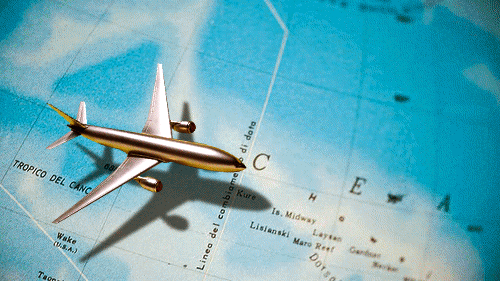
旅行 [りょこう] - travel, trip 旅 [たび] - travel, trip, journey 観光 [かんこう] - sightseeing, tourism 休み [やすみ] - holiday 旅行する [りょこうする] - to travel 乗客 [じょうきゃく] - passenger 旅行者 [りょこうしゃ] - tourist 外国人 [がいこくじん] - foreigner 国 [くに] - country 言語 [げんご] - language 通貨 [つうか] - currency 文化 [ぶんか] - culture 旅行先 [りょこうさき] - travel destination 旅行日程 [りょこうにってい] - itinerary 旅行代理店 [りょこうだいりてん] - travel agent, travel agency パンフレット - pamphlet, brochure 旅行保険 [りょこうほけん] - travel insurance 注射 [ちゅうしゃ] - injection 予約する [よやくする] - to book, to reserve キャンセルする - to cancel 遅れる[おくれる] - to delay 乗り換える [のりかえる] - to change; to transfer 借りる [かりる] - to rent 荷造りする [にづくりする] - to pack 荷物 [にもつ] - luggage, baggage 手荷物 [てにもつ] - hand luggage, carry-on bag パスポート - passport ビザ - visa チケット - ticket 地図 [ちず] - map 飛行機 [ひこうき] - airplane 電車 [でんしゃ] - train, electric train 列車 [れっしゃ] - train 汽車 [きしゃ] - train, steam train 新幹線 [しんかんせん] - bullet train 地下鉄 [ちかてつ] - subway 車 [くるま] - car バス - bus タクシー - taxi 船 [ふね] - ship, boat フェリー - ferry 自転車 [じてんしゃ] - bike バイク - motorcycle 空港 [くうこう] - airport 便 [びん] - flight パイロット - pilot 客室乗務員 [きゃくしつじょうむいん] - cabin crew, flight attendant エアライン - airline 航空会社 [こうくうがいしゃ] - airline company ターミナル - terminal ゲート - gate 時刻表 [じこくひょう] - timetable, schedule 到着[とうちゃく] - arrivals 出発[しゅっぱつ] - departures 税関 [ぜいかん] - customs チェックイン - check in 搭乗券 [とうじょうけん] - boarding pass, boarding card 保安検査 [ほあんけんさ] - security control セキュリティチェック - security control 入国審査 [にゅうこくしんさ] - passport control 手荷物受取所 [てにもつうけとりしょ] - luggage reclaim インフォメーション(カウンター) - information (counter) 両替 [りょうがえ] - money exchange 駅 [えき] - station 切符売り場 [きっぷうりば] - ticket window, ticket booth, box office 券売機 [けんばいき] - ticket machine (プラット)ホーム - platform 停留所 [ていりゅうじょ] - stop 港 [みなと] - harbour 駐車場 [ちゅうしゃじょう] - parking space 宿泊 [しゅくはく] - lodging ホテル - hotel 受付 [うけつけ] - reception desk, information desk フロント - reception チェックイン/チェックアウト - to check in/out 部屋 [へや] - room 旅館 [りょかん] - ryokan ゲストハウス - guesthouse ホステル - hostel コテージ - cottage コインロッカー - coin-operated locker ガイド - guide 通訳者 [つうやくしゃ] - interpreter 観光案内所 [かんこうあんないじょ] - tourist information office 観光名所 [かんこうめいしょ] - sightseeing spot, tourist attraction ツアー - tour カメラ - camera 写真 [しゃしん] - photo お土産 [おみやげ] - souvenir ポストカード - postcard 時差ぼけ [じさぼけ] - jetlag 乗物酔い [のりものよい] - motion sickness










You know exercise is good for you, but do you know how good?
No. 1: Exercise controls weight
No. 2: Exercise combats health conditions and diseases
No. 3: Exercise improves mood
No. 4: Exercise boosts energy
No. 5: Exercise promotes better sleep
No. 6: Exercise puts the spark back into your sex life
No. 7: Exercise can be fun
Professional Tai Chi Swords, more on http://www.icnbuys.com/tai-chi-swords.
follow back
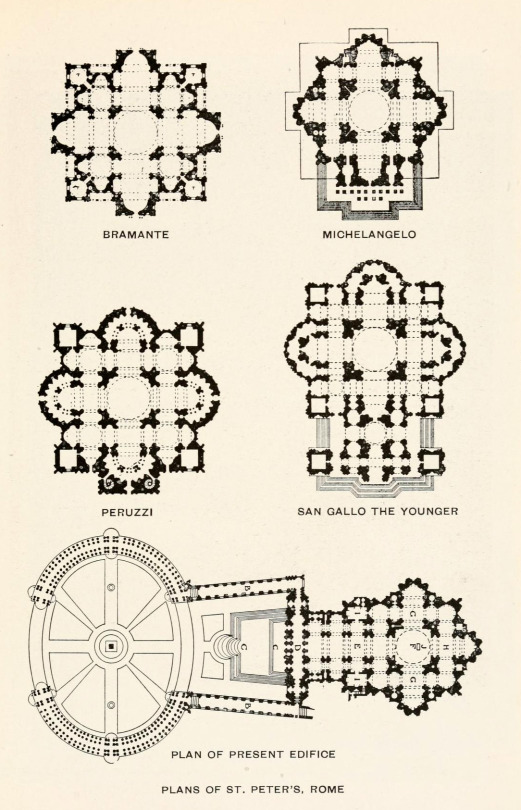
Various plans of St. Peter’s, Vatican